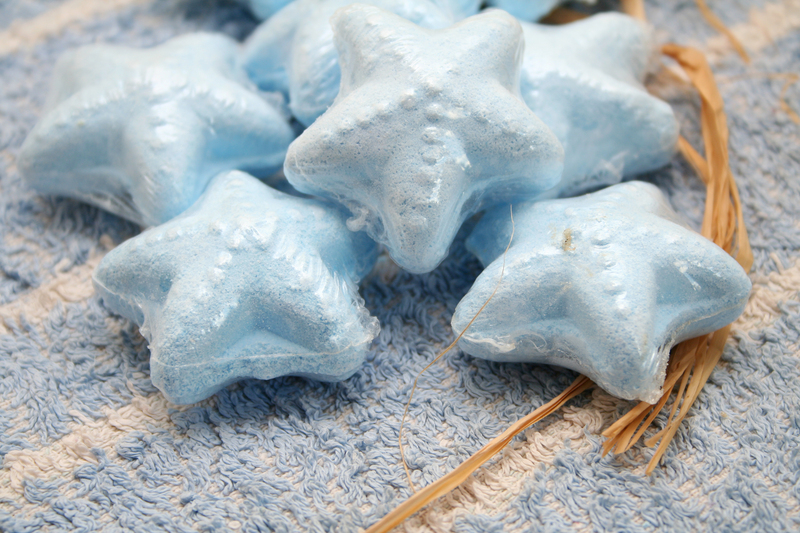Pro Car Detailing: Clean and Shine Like the Experts
Posted on 15/09/2025
Pro Car Detailing: Clean and Shine Like the Experts
If you've ever gazed admiringly at a freshly detailed car gleaming under the sun and wondered how professionals achieve that flawless finish, you're in the right place. Professional car detailing isn't just about washing your car -- it's a transformative process that restores, protects, and elevates your vehicle's appearance inside and out. In this comprehensive guide, we'll reveal the techniques, products, and secrets that pros use so you can clean and shine your car like an expert too. Dive in for detailed steps, expert advice, and must-know car care tips!
What is Pro Car Detailing?
Pro car detailing means far more than a basic car wash. It's an in-depth cleaning, restoration, and finishing process that rejuvenates a vehicle beyond what simple washing ever could. The aim is to achieve a like-new look -- or even better -- while providing long-term protection.
- Exterior Detailing: Cleaning, polishing, and protecting all outside surfaces, including paint, wheels, windows, and trims.
- Interior Detailing: Vacuuming, shampooing, deodorizing, and protecting seats, carpets, dashboard, and other cabin areas.
- Engine Bay Detailing: Degreasing and cleaning the engine compartment for a pristine look and better functionality.
Expert detailers use specialized tools and formulations, plus proven techniques, to achieve that coveted "showroom shine."

Why Choose Professional Car Detailing Over a Regular Car Wash?
Many car enthusiasts and everyday drivers alike wonder: "Is professional detailing really worth it?" The answer is a resounding yes.
- Thorough Cleaning: Pro detailing removes dirt, grime, and contaminants regular washing can't touch.
- Paint Protection: Waxes, sealants, and ceramic coatings shield your paint from UV rays, bird droppings, tree sap, and more.
- Improved Resale Value: Keeping your car in top-notch condition results in higher resale or trade-in value.
- Long-Term Cost Savings: Preventing stains, swirl marks, and oxidation saves you money on paint correction or repairs in the future.
- Personal Satisfaction: Driving a spotless, sparkling vehicle just feels great!
Essential Tools and Products for Expert Car Detailing
Before you start your DIY pro car detailing session, gather the right supplies. Quality tools and products make a big difference in your results.
Must-Have Exterior Car Detailing Tools
- High-quality microfiber wash mitts and drying towels
- Bucket system (at least two buckets -- one for wash, one for rinse)
- Grit guards to trap dirt
- pH-neutral car shampoo
- Clay bar or clay mitt for decontaminating paint
- Polishing pads and dual-action (DA) polisher
- Paint correction compounds and polishes
- Carnauba wax, paint sealant, or ceramic coating for paint protection
- Wheel and tire cleaner
- Soft brushes for intricate areas
- Glass cleaner (ammonia-free)
Interior Car Detailing Essentials
- Strong vacuum with crevice tool attachments
- Fabric or leather cleaner (specific to upholstery type)
- Interior brushes for vents, seams, and tight spots
- Steam cleaner for stubborn grime and sanitization
- Non-greasy dashboard and trim protectant
- Odor eliminator or automotive air freshener
Engine Bay Detailing Supplies
- Degreaser or designated engine cleaner
- Soft detailing brushes
- Microfiber towels
- Plastic and rubber protectant (for hoses and trim)
Step-by-Step Guide: Pro Car Detailing Like the Experts
Ready to achieve that pro-level shine? Let's break down the step-by-step process the experts use to detail a car perfectly.
1. Start with a Thorough Hand Wash
- Rinse the car to remove loose dirt, starting from the top and working down.
- Fill two buckets: one with soapy water (wash), one with clean water (rinse).
- Use the "two-bucket method" and a microfiber mitt to avoid swirl marks.
- Clean wheels and tires last, using separate brushes and cleaners.
- Dry with a clean microfiber towel or air blower to prevent water spots.
2. Clay Bar Decontamination
- After washing, glide a clay bar with lubricant over the paintwork to remove embedded contaminants like tar, sap, and industrial fallout.
- This leaves the surface ultra-smooth and prepped for polishing.
3. Paint Correction: Polishing for Perfection
- Inspect the paint under direct light or a detailing lamp for swirl marks, scratches, and oxidation.
- Use a DA polisher with appropriate pads and compound to carefully polish away imperfections.
- Follow up with a finer polish for added gloss and clarity.
4. Protect the Paint
- Apply a layer of carnauba wax, synthetic paint sealant, or ceramic coating, depending on your preference for shine, depth, and durability.
- This crucial step protects the paint against environmental hazards and UV rays while delivering the brilliant, mirror-like finish pros are known for.
5. Detail the Wheels and Tires
- Use a strong wheel cleaner to dissolve brake dust and grime.
- Scrub with dedicated wheel brushes to reach every nook and cranny.
- Apply a water-based, non-sling tire dressing for that deep black, satin look.
6. Pristine Glass and Mirrors
- Clean inside and out with streak-free, ammonia-free glass cleaner.
- Don't forget to roll down the windows a few inches and clean the edges!
7. Interior Deep Clean and Protection
- Vacuum: Thoroughly remove dust, debris, and pet hair from all carpets, mats, and upholstery.
- Shampoo: Use fabric or leather-specific cleaners and a steam cleaner for stubborn stains or general sanitization.
- Detail: Clean crevices, vents, and hard-to-reach areas with small brushes.
- Protect: Apply non-greasy, UV-protective dressings to dashboard, console, and all plastic/rubber/vinyl trims.
- Deodorize: Finish with an odor neutralizer or high-quality air freshener.
8. Engine Bay Detailing
- Protect sensitive components with plastic bags (battery, air intake, connectors).
- Spray a degreaser, agitate with soft brushes, and rinse gently.
- Dry with microfiber towels, then apply a non-greasy protectant to plastics and hoses for a factory-fresh look.
Top 10 Pro Detailing Tips for a Showroom Finish
- Always work in the shade to prevent soap or products from drying too quickly and leaving spots.
- Invest in high-quality microfiber towels for washing, drying, and buffing -- avoid anything abrasive.
- Use dedicated glass, trim, tire, and paint products; never cross-contaminate towels or brushes.
- Replace buckets of wash water if they get too dirty to prevent scratching the paint with grit.
- Wash and detail top-down: roof, windows, hood, trunk, side panels, then wheels and tires last.
- Apply wax, sealant, or coating in thin, even layers -- more is not always better.
- For tough interior stains, a steam cleaner is your secret weapon for both cleaning and sanitizing.
- Detail the door jambs and trunk edges for a truly "detailed" appearance.
- Polish headlights and taillights to restore clarity and improve nighttime visibility.
- Maintain your hard work with regular gentle washes, quick detail sprays, and routine vacuuming.
Common Car Detailing Mistakes to Avoid
Even well-intentioned car owners can make mistakes in their quest for a perfect finish. Avoid these pitfalls to ensure professional-grade car care:
- Using dish soap or household cleaners (these strip wax and can damage paint).
- Skipping the clay bar process before polishing or waxing.
- Washing or drying with old or dirty towels (causes swirl marks).
- Neglecting non-paint surfaces, such as wheels, trim, engine bay, and door jambs.
- Applying tire shine spray to the tread (makes tires slippery and unsafe).
- Overusing or underusing products (read the instructions for optimal performance).
How Often Should You Detail Your Car?
The frequency depends on your driving habits, local climate, and priorities. Here's what experts recommend:
- Full professional detail: Every 4-6 months
- Paint protection (wax, sealant, or ceramic): Every 3-6 months, or as indicated by product
- Basic wash (DIY): Every 1-2 weeks
- Interior vacuum and wipe-down: At least monthly
Tip: If your vehicle is exposed to regular road salt, pollen, bird droppings, or tree sap, more frequent detailing is recommended to prevent damage and staining.
Should You Hire a Pro Car Detailing Service?
While DIY auto detailing can yield impressive results, there are times when calling in the experts is the smart choice:
- Your paint is heavily swirled or scratched and needs machine polishing.
- You want a long-lasting ceramic coating professionally applied.
- Your interior has stubborn stains, odors, or pet hair you can't remove on your own.
- You simply don't have time or suitable tools for a full detail.
Professional detailers possess experience, specialized equipment, and advanced products for truly stunning results and long-term protection. It may be an investment, but your car will look, feel, and be valued like a champion.

Conclusion: Achieve Pro-Level Car Detailing at Home
Mastering the art of pro car detailing isn't reserved for experts -- with the right knowledge, tools, and products, you can deliver stunning, brilliant results yourself. By following proven techniques for cleaning, correcting, and protecting every surface of your car, you ensure it not only turns heads but also resists aging and retains value for years to come.
If your goal is that deep clean and radiant shine only the pros seem able to create, now you know: It's all in the details. Happy detailing!
Frequently Asked Questions (FAQ) About Pro Car Detailing
Does pro car detailing include engine cleaning?
Many professional car detailers offer engine bay cleaning as part of their top-tier packages. Always confirm whether it is included or needs to be requested.
How long does a full professional detail take?
A full detail by an expert can take anywhere from 4 to 12 hours depending on vehicle size, condition, and services requested.
What's the difference between waxing and ceramic coating?
Wax provides a glossy finish and basic protection lasting weeks, while ceramic coating chemically bonds with paint for months or even years of ultra-durable protection and easy cleaning.
Is detailing safe for all types of cars?
Absolutely. Detailing, when performed correctly, preserves and enhances all vehicles -- from daily drivers to high-end luxury cars to classic collectibles.
How can I maintain a pro-level finish between details?
- Use a pH-neutral shampoo and microfiber mitt for regular washes.
- Employ a quick detail spray to boost shine and remove light dust.
- Apply interior protectants every few weeks to keep surfaces clean and conditioned.
- Address bird droppings or sap immediately to prevent stains.
Unlock the secrets of experts and invest in professional-grade car detailing -- your vehicle will thank you with years of head-turning luster!



